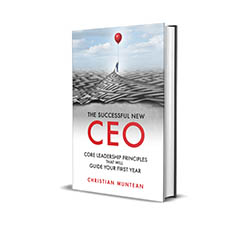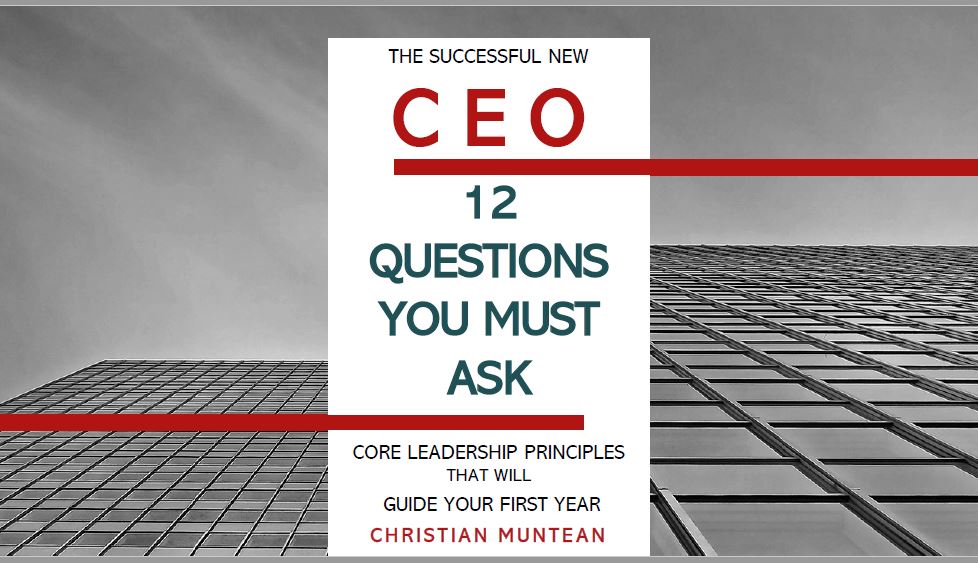Action Matters: No One is Grateful for the Leader Who is an Expert Thumb Twiddler

“Is there a tool we can use that will help us take action?”
I was asked this question recently. The asker was a sincere leader who was frustrated by inactivity – on his part and on the part of his team.
“No,” I responded. “You have to just do it. You have to lead.”
You can lead a horse to water but….
You can’t make leaders lead.
A leader has to choose to lead.
When I ask an audience to describe the ideal characteristics of a leader, they’ll often describe someone who takes action, sets vision, solves problems, and makes things happen. These are all verbs.
They don’t need time to think about this. The descriptions just pop out.
But when people find themselves in a leadership role, suddenly, it’s not so obvious. For some, leadership feels more like a noun. They are confronted with the reality that just sitting in the leader’s seat doesn’t mean you are leading.
There are reasons (always reasons): Some people, with no aspiration to lead, just wind up in leadership roles. Some see leadership as an award for a job well done, a career step, or a rung on the ladder to aspire to.
Most often, a lack of action is simply due to some form of fear. Less often, it is due to laziness or a lacking sense of responsibility.
Leaders not getting off the dime is such a common problem that it’s an official, academic “thing”.
Active leadership is a formal academic leadership model. Back in grad school, I recall being assigned to write a paper on Active Leadership. One sentence in, I felt stuck. It seemed self-evident to me. “Leaders take action.” What else was there to say?
It surprised me that a whole model of leadership has been developed around the idea that, “Some leaders provide leadership.”
As it turned out, many people see leadership as a passive position (i.e. an award, a promotion, a pay grade, an honor, an entitlement for loyalty, etc). Others see leadership as a reflective position (i.e. being the ‘grey-haired voice of wisdom’ on the board, the technical wizard who was promoted to provide insight at an executive level).
In contrast, examples of what kinds of actions an active leader might pursue include:
- Direction setting
- Opportunity capturing
- Problem-solving
- Communication
- Coaching and mentoring
- Conflict resolution
- Expressing appreciation
Add to the list as you see fit. The point is, if a leader isn’t actively leading, they are letting something (or anything) else do it for them. This may be circumstances, urgencies, crises, shiny objects, or complaining people. Who knows?
Inaction is costly
Opportunities benefit from action. Problems benefit from inaction.
Opportunities expire with time. Know how to recognize them. Be ready and willing to act when they emerge.
When leaders are clear on their values, the vision of the organization, and their core goals and strategies, the easier it is to vet opportunities.
Problems expand with time. Just like a leak in the roof, problems can’t be expected to resolve themselves.
When leaders see a problem, they should act to address it. Especially when one threatens their values, vision, or core goals and strategies, they should act. Additionally, if a problem hurts people, employees, customers, or the community, inactivity becomes a moral failing.
Action matters. No one is grateful for the leader who was an expert thumb twiddler.
I recently saw a video of an 80-year-old man doing a heavy deadlift. I found it inspirational.
But the comments following the video were overwhelmingly negative. People critiqued his form. He was only going to hurt himself lifting heavy things. Couldn’t believe other people in the gym were letting him lift. He should stay away from weights, etc, etc.
My thoughts diverged. He’s 80 years old and: A) He’s still alive and healthy, good for him. B) He’s in the gym making it happen. C) He was handling more weight than most people sixty years younger than him can handle. D) Keyboard warriors are irritating.
Haters gonna hate. Someday, I aspire to be like him.
It’s better that he was lifting than if he wasn’t. Sure, he could throw his back out. But most of his peers have died already. Seems like whatever he’s doing is working better than whatever they did.
Action is better than inaction.
There is risk for both. Every athlete I know has injuries. But everyone sedentary person I know is dying while sitting.
What if I do the wrong thing?
You will.
Every active leader makes mistakes. And so do all the inactive leaders.
Mistakes happen all the time. But very few decisions are life and death. Almost none are irreversible.
At least not if you are good at quickly recognizing that you need to course correct. And then ensuring you correct your course.
Mistakes from taking the wrong action are solved by quickly taking the right action.
Action is the answer.
How to Get Better at Taking Action
My best clients are action-takers. They spend minimal time deliberating (it has its place) and maximum time executing.
You can take more productive actions, quickly when you:
- Develop crystal clarity about your values and how they should impact decisions and behavior.
- Define the vision of the organization. This is the picture of what you are trying to build.
- Establish your core goals. These are the major accomplishments you need to make to build your vision.
Altogether, this begins to shape a core strategy or framework for decision-making. This creates a filter that helps you quickly sift through answers that are a better fit for you.
Become comfortable with accepting the occasional mistake or error.
As a born and bred perfectionist, I found enormous freedom when I stopped aiming for A+++ work and instead accepted solid B-quality work. It’s still honor roll work.
I prefer A+++. I always will appreciate high quality. But when I only accepted this, it was hard to learn, it felt risky to attempt new things, and I would take too long to execute.
I realized that, ultimately, the difference between B-quality work and A+++ quality was unnoticeable to most.
Notice what stops you.
Most leaders have some decision or action that they keep finding a way to postpone or delay. You probably know what yours is. Here are steps that can help:
- Identify: Identify one action that you just keep not taking.
- Determine value: How important or valuable will the results of this be? Should it even be on your list? (If not, don’t do it. If so continue…)
- Explore your inaction: Reflect on why you aren’t acting. Usually, it is due to: Fear, discomfort, or lack of knowledge.
- Explore alternatives: Do you need to do this? If not, give it to someone else to get done. (Leaders ensure that things get done, they don’t have to do everything.)
- Get support: If you do, what help do you need? Who can help you?
- Build accountability: Tell someone, who you respect and don’t want to disappoint, what you are going to do, and by when. Schedule a time to follow up with them on your progress.
Take good care,
Christian
𝗧𝗵𝗲 𝗕𝗲𝘀𝘁 𝗧𝗶𝗺𝗲 𝘁𝗼 𝗖𝗿𝗲𝗮𝘁𝗲 𝗔𝗻 𝗘𝗺𝗲𝗿𝗴𝗲𝗻𝗰𝘆 𝗦𝘂𝗰𝗰𝗲𝘀𝘀𝗶𝗼𝗻 𝗣𝗹𝗮𝗻 𝗶𝘀 𝘽𝙚𝙛𝙤𝙧𝙚 𝗬𝗼𝘂 𝗡𝗲𝗲𝗱 𝗜𝘁.
Be prepared for a smooth transition in the event of an unplanned emergency succession. My guide will show you step-by-step how to devise your own plan.
Free Leadership Resources
Whether you are a new CEO, thinking of succession or exit, or wanting to strengthen your leadership and your team, I’ve got resources to help:
Enhancing your leadership skills
Are you interested in learning more about becoming a successful CEO? If so, get a free copy of my book The Successful New CEO. Not a new CEO? I’ve been told by “old hands” that they felt any CEO should read this. So, click here to get your copy today.
by “old hands” that they felt any CEO should read this. So, click here to get your copy today.
There are 𝟭𝟮 𝗰𝗿𝗶𝘁𝗶𝗰𝗮𝗹 𝗾𝘂𝗲𝘀𝘁𝗶𝗼𝗻𝘀 to ask before accepting a new CEO position. Do you know what they are? Instantly download my free e-book here.
Let’s connect.
I’m passionate about helping leaders to create workplaces they love going to and increasing the value of the services they offer. My results-oriented approach is tailored to each client’s specific situation and needs. As a leadership coach, I have developed a wealth of resources to help you and your team grow and become stronger.
Weekly Newsletter – sign up to receive my weekly articles addressing critical leadership challenges and issues.
The Leadership Coach Podcast – In my podcast, we explore effective, high-impact, and enjoyable leadership. Subscribe.
Categories
Get Christian’s Newest Book: Train to Lead

Download my free 10-page eBook:
How To Accomplish More Without Doing More:
Eight Proven Strategies To Change Your Life
Discover how to save eight hours during your workweek-even if you're too busy to even think about it. The resource every maxed out executive needs.
